How to Winterize Your Car
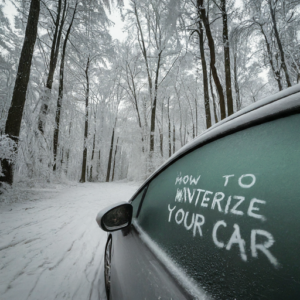
Table of Contents
ToggleWinter can be tough on your car, but with a little preparation, you can ensure that your vehicle stays safe and reliable throughout the cold months. From checking your tires to preparing an emergency kit, here’s everything you need to know to how to winterize your car.
Inspect Your Tires
Check Tire Pressure
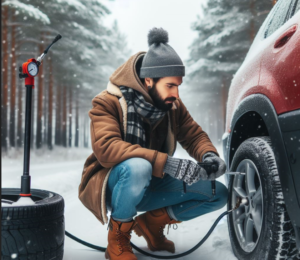
Before winter hits, make sure your tires are properly inflated. Cold temperatures can cause tire pressure to drop, leading to decreased traction and increased fuel consumption. Use a tire pressure gauge to check the pressure and inflate them to the recommended level.
Consider Snow Tires

If you live in an area with heavy snowfall, consider investing in snow tires. These tires are designed to provide better traction on snow and ice, reducing the risk of accidents during winter driving.
Inspect Tire Tread Depth
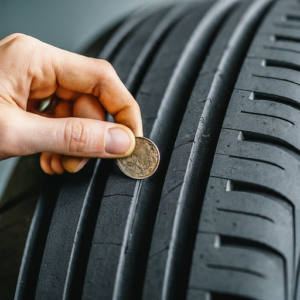
Check your tire tread depth regularly, especially before winter. Worn-out tires can be dangerous on slippery roads. If your tires have less than 4/32 inch of tread depth, consider replacing them.
Check Your Battery
Test Battery Strength
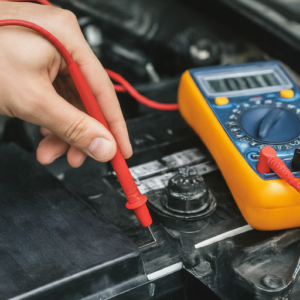
Cold weather can put extra strain on your car’s battery. Before winter arrives, test the strength of your battery to ensure it can handle the colder temperatures. If it’s weak, consider replacing it.
Clean Battery Terminals
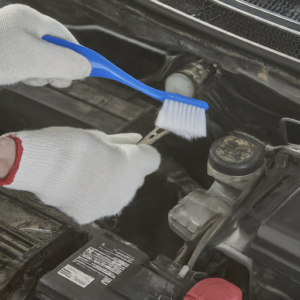
Corrosion on battery terminals can prevent your car from starting. Clean the terminals with a wire brush and a mixture of baking soda and water to remove any buildup.
Inspect Your Brakes
Check Brake Pads and Fluid

Make sure your brakes are in good condition before winter. Inspect the brake pads for wear and tear, and check the brake fluid level. If you notice any issues, have them inspected by a professional mechanic.
Fluid Check
Check and Top Up Fluids

Ensure all fluids are topped up, including oil, coolant, and windshield wiper fluid. Cold weather can cause fluids to thicken, so it’s important to keep them at the proper levels to avoid damage to your car.
Inspect Your Lights
Test All Lights

Visibility is crucial during winter driving. Test all your lights, including headlights, taillights, brake lights, and turn signals. Replace any bulbs that are burnt out.
Examine Your Heater and Defroster
Ensure Both are Working Properly

Your heater and defroster are essential for keeping you warm and maintaining visibility in cold weather. Test both systems to ensure they are working properly before you need them.
Inspect Your Wiper Blades
Replace Worn Blades

Worn wiper blades can reduce visibility during snow or rain. Replace them if they are streaking or leaving residue on your windshield.
Check Your Belts and Hoses
Look for Signs of Wear and Tear

Inspect belts and hoses for cracks, fraying, or bulges. Cold weather can cause rubber components to become brittle, so it’s important to replace any damaged parts.
You may also Like: DIY Laptop Car Mount
Prepare an Emergency Kit
Include Essentials
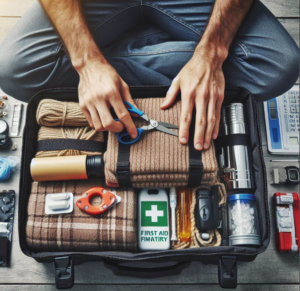
Put together an emergency kit for your car that includes items like blankets, a flashlight, a first aid kit, jumper cables, a shovel, and non-perishable snacks. It’s better to be over-prepared than caught off guard.
Protect Your Exterior
Wax Your Car
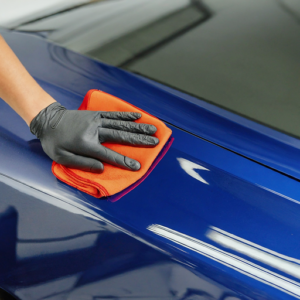
Applying wax to your car before winter can protect the paint from road salt and other debris, helping to prevent rust and corrosion.
Consider Rust Protection

If you live in an area where road salt is used heavily, consider applying rust protection to the underside of your car to prevent corrosion.
Interior Cleaning
Clean and Vacuum the Interior

Salt and dirt from winter roads can damage your car’s interior. Clean and vacuum the inside of your car regularly to prevent damage and maintain resale value.
Park Smart
Park in a Garage

If possible, park your car in a garage to protect it from snow, ice, and cold temperatures. If you don’t have access to a garage, consider using a car cover to protect your vehicle.
Drive Safely
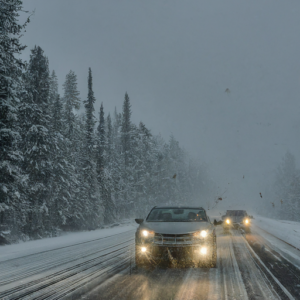
Winter driving requires extra caution. Reduce your speed, increase your following distance, and avoid sudden movements to maintain control of your vehicle on slippery roads.
Conclusion
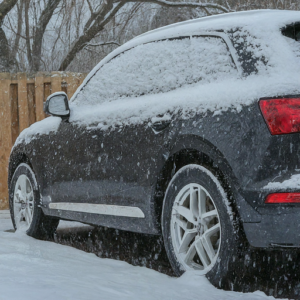
Now you have Learned How to Winterize you car. Winterizing your car is essential for keeping it safe and reliable during the colder months. By following these tips, you can ensure that your vehicle is ready to handle whatever winter throws its way. Don’t wait until the first snowfall—start preparing your car today!
You may also like: Step-by-Step Guide To Installing Ambient Lighting In Your Car
FAQs
1. When should I winterize my car?
It’s best to winterize your car before the cold weather sets in, ideally in late fall.
2. Do I really need snow tires?
Snow tires are highly recommended if you live in an area with heavy snowfall or icy conditions.
3. How often should I check my tire pressure during winter?
Check your tire pressure at least once a month during the winter months, as cold weather can cause fluctuations.
4. Can I use water instead of windshield wiper fluid?
No, water can freeze in cold temperatures, so it’s essential to use windshield wiper fluid designed for winter conditions.
5. Is it necessary to wax my car before winter?
Waxing your car before winter can help protect the paint from road salt and debris, but it’s not absolutely necessary.
6. How should I check my tire pressure before winter?
Use a tire pressure gauge to check the pressure and inflate them to the recommended level.
7. Should I invest in snow tires for winter?
If you live in an area with heavy snowfall, consider investing in snow tires for better traction on snow and ice.
8. How do I know if my battery is strong enough for winter?
Test the strength of your battery before winter to ensure it can handle the colder temperatures.
9. What should I do if there’s corrosion on my battery terminals?
Clean the terminals with a wire brush and a mixture of baking soda and water to remove any buildup.
10. How often should I check my tire tread depth?
Check your tire tread depth regularly, especially before winter, and consider replacing them if they have less than 4/32 inch of tread depth.
Here are some more FAQs for How to Winterize Your Car :
Q1. How often should I check my tire pressure during winter?
A1. It’s recommended to check your tire pressure at least once a month during the winter months.
Q2. Can I use water instead of windshield wiper fluid in winter?
A2. No, water can freeze in cold temperatures, so it’s essential to use windshield wiper fluid designed for winter conditions.
Q3. Do I need to change my oil before winter?
A3. It’s a good idea to check and possibly change your oil before winter to ensure proper engine lubrication in cold weather.
Q4. Should I use antifreeze in my radiator for winter?
A4. Yes, using antifreeze in your radiator helps prevent the coolant from freezing in cold temperatures.
Q5. How do I know if my heater and defroster are working properly?
A5. Test both systems before winter to ensure they are blowing hot air and effectively defrosting your windows.
Q6. Is it necessary to replace my windshield wipers every winter?
A6. It’s recommended to replace your windshield wipers before winter if they are worn out or leaving streaks on your windshield.
Q7. What should I do if my car gets stuck in snow?
A7. Keep a shovel in your emergency kit to dig out snow around your tires, and use kitty litter or sand for traction.
Q8. Should I top up my gas tank before winter?
A8. Yes, keeping your gas tank at least half full in winter helps prevent moisture from freezing in the fuel line.
Q9. Can I use summer tires in winter?
A9. Summer tires are not designed for cold temperatures and can become hard and lose traction, so it’s best to switch to winter or all-season tires.
Q10. How can I prevent my car doors from freezing shut?
A10. Applying silicone spray or rubbing alcohol to the rubber seals can help prevent freezing.
Q11. Should I use a battery tender during winter?
A11. Using a battery tender can help maintain your battery’s charge during periods of inactivity in winter.
Q12. How often should I replace my car’s cabin air filter?
A12. It’s recommended to replace your cabin air filter every year or 12,000 to 15,000 miles, especially before winter.
Q13. Is it necessary to wax my car before winter?
A13. Waxing your car before winter can protect the paint from road salt and debris, but it’s not absolutely necessary.
Q14. How do I know if my car’s heater core is functioning properly?
A14. If your heater blows cold air or there’s a sweet smell inside your car, it could indicate a problem with the heater core.
Q15. Can I use my regular summer windshield washer fluid in winter?
A15. It’s best to use a winter windshield washer fluid that’s formulated to prevent freezing in cold temperatures.
Q16. How can I prevent ice from forming on my windshield overnight?
A16. Placing a cardboard or plastic cover over your windshield or using a de-icing spray can help prevent ice buildup.
Q17. Should I change my brake fluid before winter?
A17. It’s a good idea to check your brake fluid before winter and replace it if it’s dirty or contaminated.
Q18. How do I know if my car’s heater is functioning optimally?
A18. If your heater takes a long time to warm up or doesn’t produce hot air consistently, it may need to be inspected by a mechanic.
Q19. Is it necessary to keep my car’s engine block heater plugged in overnight?
A19. Keeping your engine block heater plugged in overnight can help ensure easier starts and better fuel efficiency in cold weather.
Q20. Can I use a hairdryer to thaw frozen locks on my car?
A20. Yes, using a hairdryer on a low heat setting can help thaw frozen locks, but be cautious not to overheat or damage the locks.













5 thoughts on “How to Winterize Your Car | Step-by-Step Guide”